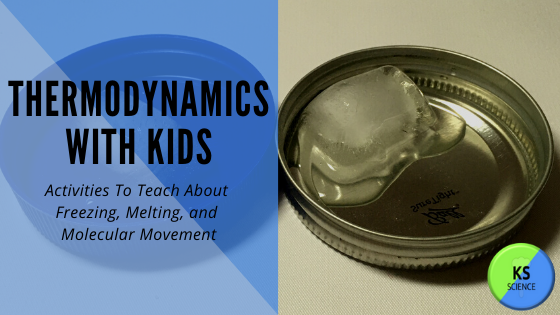Exploring Thermodynamics With Kids: Activities To Teach About Freezing, Melting, And Molecular Movement
Studying thermodynamics starts at a very young age, even if
we don’t use that big word.
Thermodynamics is the branch of science that is concerned with the
relationship between heat, work, temperature, and energy. It studies the amount of energy moving in and
out of a system
Young children look at thermodynamics as studying what is
hot and cold. They learn that ice is
cold. The air can feel cold. They learn to wear a coat, and when they get
hot, they take it off. They discover that
what they touch has a temperature.
It is important to expand on this concept, so they do not
grow up with misconceptions. The basic
definition of energy is the ability to do work.
To do work means an object has to move.
That can be at an atomic level or at a larger level.
There are many types of energy. Below you will find ideas for exploring thermal
energy. Thermal energy refers to the
internal energy of a system that is responsible for its temperature. Basically, it is looking at how fast the molecules
are moving. Temperature is the measurement
of the molecules' average speed or kinetic energy. We tend to look at it as hot and cold. A hot substance has faster-moving
molecules. Those are relative terms. Heat is really the flow of thermal energy from a
warmer object to a cooler object. Heat always
moves from one system to another because of a difference in temperature. It is the movement of energy. It will always move from a higher to a lower
temperature. When you touch a hot surface, thermal energy from the object traveled to your hand. You absorbed thermal energy. When you touch something cold thermal energy
from you traveled to the object. The
object absorbed thermal energy.
There is
no cold. Cold is the absence of thermal
energy. There will be no energy flow when both systems are of equal temperature. We say the
systems are at equilibrium.
Activities to Explore Thermal Energy
Here are some great ways you can start introducing your
students to the study of thermodynamics.
1. Learn about the molecular movement of molecules by studying the diffusion of food coloring. When the water is hot, the food coloring will spread faster. This lets the students see that the molecules are moving. Available in 4-grade levels.
2. Practice taking the temperature of different liquids. Students can place the thermometer in different temperature of water to discover that the warmer the liquid the higher the temperature. Learn more here.
3. Explore melting by investigating conduction. This is a great lab for showing how thermal energy transfers from one object to another. Place ice cubes on different surfaces and see what melts the fastest. This lab is easy to prep and can be completed in 30 minutes.
4. Discover how salt affects the temperature of ice. I love danging ice on a string. It is a fun experiment, and the kids begin to understand more about the freezing point of water. It makes a great science fair project.
5. Make ice cream with students. This is always fun and a great way to show a liquid turning into a solid because of the drop in temperature.
7. Reaction in a bag is another great experiment. It is a chemical reaction that will release heat or absorb heat. When it absorbs heat, it feels cold. A great example of conduction. Find the directions here.
8. Elephant toothpaste is the classic exothermic reaction. That means when the molecules break apart, heat is released. This is another great reaction for older students. Try out this fun investigation.
9. Observe how ice absorbs sunlight and converts it to heat. This is a fun science and STEM challenge. Students will build a shade device to protect a popsicle. Head on over to see all that is included.
Have fun exploring thermodynamics. Remember, the amazing thing is two materials can be the same temperature but transfer thermal energy (heat) very differently.
Expand Further












